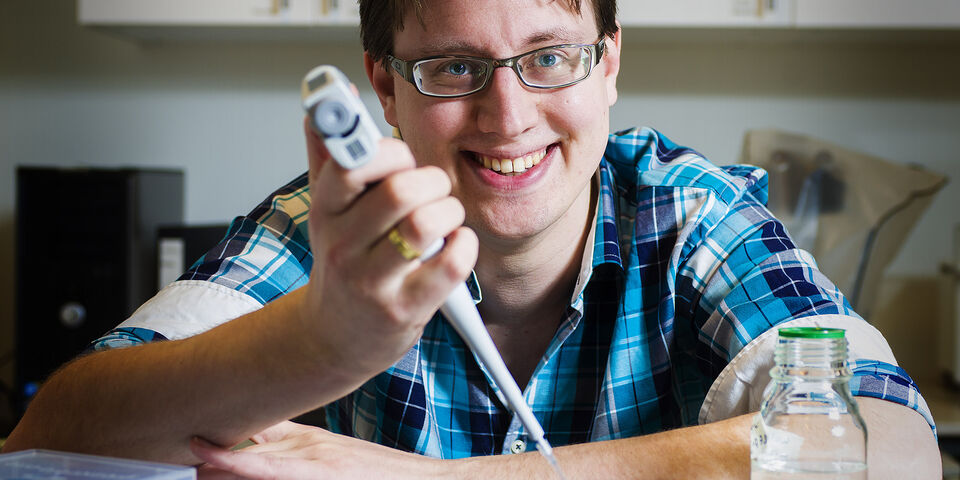Home Stretch | Aiming the lens at fungi
Fungi in the house: they are dirty, unsightly and especially unsanitary. PhD candidate at Applied Physics Karel van Laarhoven succeeded in filming growing fungi on a piece of gypsum with a microscope. The films can provide valuable information for the design of fungicidal materials.
Bathrooms, kitchens, cellars: in spaces where air humidity is too high you run a great risk of fungoid growth on the wall. Apart from being unsightly, fungi on a wall can be very unsanitary as well – just like they are on food. They excrete all sorts of substances, for instance to digest food in their environment, to which substances one may be allergic. The spores that fungi release into the air in order to propagate can also cause asthma, as PhD candidate Karel van Laarhoven explains. “According to American research, at least one-fifth of all asthmatic disorders is caused by spores from fungi.”
Fungi need moisture to grow: if the relative humidity remains below seventy percent, there is no trouble at all. However, a great deal is still uncertain about the rate at which fungi develop exactly and under what circumstances, Van Laarhoven knows. “Research has been conducted alright, but in a petri dish with a culture. Not under varying conditions in a realistic medium like gypsum, particularly because it is difficult to make growing fungi visible on a rough surface.”
Yet that is precisely what the physicist managed to do: he took one of the most prevalent fungi, Penicillium rubens, - “the fungus on which Alexander Fleming once discovered the effect of penicillin; it likes to grow on oranges especially, but also on walls” – and made it grow on a piece of gypsum with a size of only one square millimeter.
He used ferric oxide to create contrast between the white gypsum and the white fungus. By means of a relatively simple microscope - “they could not be too expensive, as I wanted to use a number of them simultaneously” – he made a photo every hour for several weeks. This resulted in a film of a growing fungus. “Under optimal conditions they grow by some ten micrometers per hour”, says the doctoral candidate.
The fungi heated up under the microscope
The most difficult element to control turned out to be the relative humidity, which is the most important factor by far. “For instance, it appeared that the samples heated up by 1.5 degree under the microscope. This was due to the fact that the electronics that allowed me to read the microscope produced too much heat. As a result, the relative humidity dropped by ten percent and no more fungus growth occurred. I solved that problem with a cooling element, which enabled us to set the temperature at less than 0.1 degree.”
The conclusions? Fungi ‘remember’ when they experience dry periods and consequently develop at a slower pace during the moist periods. The finer the porous material, the better the fungi grow. And although humidity from the air is enough for the fungi to survive, it has also turned out that they thrive better when the gypsum is really moist. “We think that this is because they then have better access to nutrients, via the water network that arises then.”


Discussion